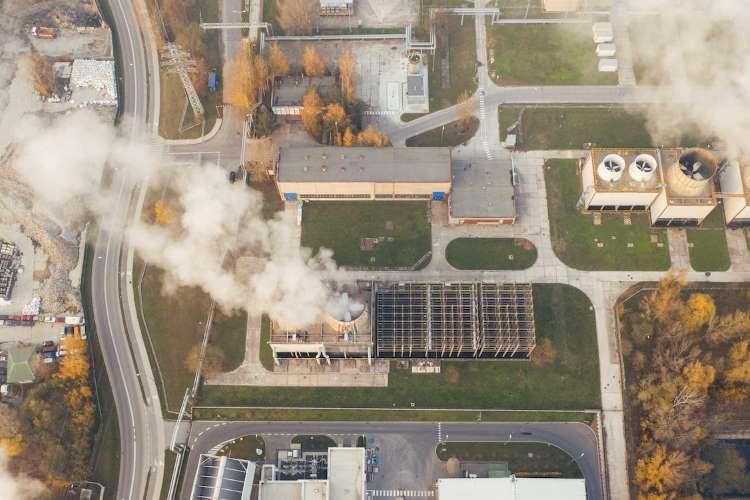
Since the Industrial Revolution in the 18th century, industry and environmental interests have been at odds. With the looming threat of climate change, balancing these opposing forces is critical. In India, courts have intervened in cases to protect nature against unsustainable development.
The ongoing case of Vedanta Group vs State Of Tamil Nadu highlights this conflict. In May 2018, the Tamil Nadu government shut down Vedanta’s copper smelter over environmental concerns. Vedanta’s Sterlite Copper plans to petition the Supreme Court for a review, citing national demand-supply gaps that reopening might alleviate.
READ | Chinese economy pivots from speed to sustainability
While closed, the plant’s shutdown has reportedly cost India nearly $1 billion annually in lost foreign exchange from copper exports and necessitated $1.2 billion in imports to meet domestic demand, according to the International Copper Association. India, previously a copper exporter, became a net importer in 2018, turning to Southeast Asia, Japan, and West Asia for supplies. However, concerns over nature cast doubt on the plant’s reopening.
It is important to note that India’s environmental performance has shown little improvement since 2020. In the 2022 Environmental Performance Index, India ranked a dismal 180th out of 180 countries, highlighting the ongoing challenges of balancing industrial development with environmental protection.
The long-term economic repercussions of nature’s neglect must not be overlooked. While industries like mining and smelting may provide immediate financial benefits, they often lead to sustained nature’s degradation, public health issues, and a loss of biodiversity. These consequences can ultimately result in significant economic costs, including expenditures on healthcare, loss of livelihoods for local communities, and the necessity for expensive natural remediation. This perspective highlights the need for integrating environmental sustainability into economic planning and policymaking.
The shutdown followed protests over pollution impacts on local health. Despite repeated attempts by Vedanta to restart operations, legal challenges have persisted. In February 2020, while denying permission to reopen the plant, the Supreme Court pointed to repeated ecological law violations and risk to public health.
Industry vs environment
In India, disputes over protecting nature often favour corporations. The 2020 Environmental Performance Index ranked India 168th out of 220 countries. From 2017 to 2024, numerous projects received environmental clearance retrospectively, facilitated by weakened Environmental Impact Assessment (EIA) regulations. Recent amendments have further diluted ecological protections, risking greater exploitation of natural resources.
While the trend has been towards weakening environmental regulations, there have also been positive developments. In 2023, the National Green Tribunal (NGT) took a strong stance against ecological violations, imposing hefty fines on polluting industries and ordering stricter pollution control measures. This indicates a growing recognition of the need for ecological accountability.
Enhancing public participation in ecological decision making and ensuring transparency in the environmental clearance process are crucial. A democratic approach to environmental governance would empower local communities, allowing them to have a significant say in the projects that impact their nature and health. This approach not only fosters greater accountability and trust in the decision-making process but also leads to more sustainable and community friendly outcomes.
India could benefit from examining how other countries manage the balance between ecological sustainability and industrial growth. Many nations have successfully implemented sustainable industrial practices that minimise environmental impact while bolstering economic growth. By studying these global examples, India can learn valuable lessons and adopt proven strategies that align industrial development with environmental stewardship, ensuring a sustainable future for both the economy and the natural world.
Technological innovation plays a major role in reconciling industrial development with ecological sustainability. Investments in clean technology and research can lead to industrial processes that are both economically viable and environmentally friendly. By prioritising sustainable innovation, India can pave the way for a new era of industrialisation that contributes to both economic growth and ecological protection, creating a model for sustainable development that can be replicated globally.
Several Indian companies are demonstrating that economic success can go hand in hand with ecological responsibility. For instance, the Aditya Birla Group has set ambitious sustainability goals and adopted cleaner production processes. These examples serve as a beacon for other industries, showcasing the achievability of sustainable development.
Despite official claims of strengthened environmental laws, many corporate efforts are seen as superficial greenwashing. Policymakers face the challenge of balancing environmental protection with the need for investment and development, essential for job creation and poverty reduction. Until these goals align, significant progress is unlikely. Sustainable development must become integral to global business strategies, and policymakers must effectively encourage corporations to prioritise ecological problems. Growth is important, but its ultimate purpose and cost must be carefully considered.

